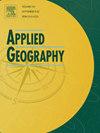Protecting and constructing ecological corridors for biodiversity conservation: A framework that integrates landscape similarity assessment
Abstract
Ecological corridors are crucial for preserving biodiversity in human-impacted areas, but previous work has focused on landscape connectivity rather than ensuring that connected areas are suitable for migrating species. Our study developed a framework integrating landscape similarity assessment to prioritize corridor protection and construction. Taking Nanjing Metropolitan Area in 2020 as a case, we identified ecological sources from the perspectives of function and structure. The minimum cumulative resistance (MCR) model and gravity index were then employed to detect ecological corridors and assess connectivity. The similarity index was subsequently applied to assess the landscape similarity between ecological sources, which was quantified from three aspects of composition, as well as configuration and physical geography. Final classification and prioritization of corridors for protection and construction were based on the precedence matrix method. Our results showed that 58 ecological sources were potentially connected by 103 corridors. The 39 corridors combining high connectivity and high similarity were assigned the highest priority for protection, and the 27 corridors with low connectivity but high similarity were assigned to the category with high construction priority. Our findings advance theoretical and practical understanding of ecological corridors by demonstrating that high priority corridors can be identified for focused conservation efforts.

 求助内容:
求助内容: 应助结果提醒方式:
应助结果提醒方式:


